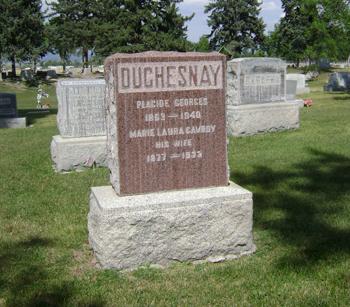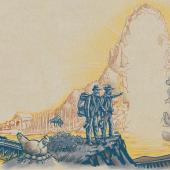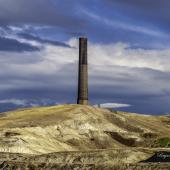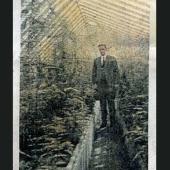Hauntings: Songbirds in the Alley
Historic Reeder’s Alley in Helena traces its roots to the dwindling gold rush, when Louis Reeder, a brick mason from Pennsylvania, built the tiny multi-level flats between 1873 and 1884. They were mostly home to single men, miners at first and when they moved on, others called the alley home.
By the 1920s, Laura Duchesnay was one of the alley’s few female residents. Her husband George owned the stone house at the top of the alley. The French-born Duchesnays occupied the front apartment and rented the building’s other three. Neighborhood children were in awe of Laura. She had gentle ways with wild birds and knew how to heal their broken wings. Laura also raised canaries by the hundreds, filling her small apartment with tiny songbirds.

In February of 1933, Laura died after a short illness. George brought her home to Reeder’s Alley. Neighbors crowded into the small apartment to say goodbye and Laura’s canaries sang sweetly. After that, George managed his apartments until he died in 1940. Memories of Laura and her songbirds faded.
By the 1950s, Reeder’s Alley was in bad shape. Three dynamic Helena women—Eileen Harper, Jane Tobin, and Pat Boedecker—purchased the stone house at the top of the alley where Laura had raised her canaries. The three women dreamed of creating an artists’ colony where art and history would intertwine. They began renovations in February 1961, unaware that Laura’s canaries once sang sweetly in the front apartment, and that February marked the anniversary of Laura’s death. The women removed walls, cleared away layers of refuse, and opened a lunchroom. They eventually acquired the alley’s other buildings and transformed the derelict tenements into shops and galleries.
The alley changed hands in 1973 and the stone house eventually became the Stonehouse Restaurant. Under various owners it was one of Helena’s most popular longtime eateries.
In the 1990s, I discovered an unpublished article about Reeder’s Alley. In it, writer Dick Pace mentioned a local bird doctor who once lived there, prompting me to try to discover her identity. I found Laura Duchesnay, her advertisements for canaries, her poignant obituary, and her tombstone at Forestvale Cemetery. I tucked this trivia away and forgot about it.
Some years later in 2002, Michaela Crawford told me about an eerie experience she had at the Stonehouse when she was waitressing there. It was February 13th, the night before Valentine’s Day, and Michaela worked late, setting tables for the next day. She was at the door and ready to head home when she heard chirping. She thought a bird had gotten shut in the building. She knew if it flew around all night, the tablecloths would be ruined. She searched but found no bird.
Tired and frustrated, Michaela stood at the door, her eyes shut, hoping to pinpoint the sound. Then she heard a whole flock of chirping birds overhead; she heard their tiny wings beating the ceiling as they flew the entire length of the building. The sound stopped abruptly, leaving Michaela in complete silence. She looked everywhere, but found no birds.
Michaela’s story triggered my memory. I recalled Laura, her canaries, and the significance of February. I asked her if she knew about Laura’s canaries. But how could she have known that odd detail? After a few thoughtful moments, Michaela simply said, “No.” I could tell that this was a revelation to her, and that she now realized the extraordinary import of her encounter.
The Stonehouse closed and the building was vacant more often than not for the next eight years, operating again only briefly as a restaurant. During its final months, I went to lunch at the Stonehouse one day and discovered Michaela waitressing there.
I asked her if the birds had again “spoken” to her. She replied that she heard them that one time only, but she went on to say that a few weeks previous, a young boy was at the restaurant having dinner with his family. Michaela saw him come out of the restroom up front, and thought he looked upset, so she stopped and asked if he was all right. He answered, “How come I can hear all these birds chirping? It’s driving me crazy,” he told her, “because no one else can hear them.” Apparently Laura’s canaries still sing their songs, but only to a chosen few.
Reeder’s Alley and the stone house are now under state ownership, managed by the Montana Heritage Commission. I often give tours of Reeder’s Alley. Almost always when I tell Laura’s story, birds gather in the surrounding trees, as if to listen. Winter, summer, spring, fall—all kinds of birds flock there. I like to think they do so in tribute to Laura Duchesnay.












Leave a Comment Here